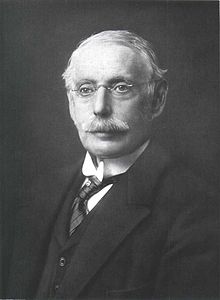Early Life and Education
– Charles Algernon Parsons was born in 1854 into an Anglo-Irish family.
– He was the youngest son of the famous astronomer William Parsons, 3rd Earl of Rosse.
– Parsons received his education at home in Ireland, where he was taught by private tutors who were well versed in the sciences.
– He studied mathematics at Trinity College, Dublin, and later at St. John’s College, Cambridge, where he graduated with a first-class honors degree.
Invention of the Steam Turbine
– Parsons invented the steam turbine in 1884, which revolutionized power generation.
– His steam turbine engine turned at 18,000 RPM and was used to drive an electrical generator.
– The steam turbine made cheap and plentiful electricity possible and had a significant impact on marine transport and naval warfare.
– Parsons’ appreciation of the scaling issue led to his breakthrough on the compound steam-turbine, which was more efficient than existing engines.
Contributions to Engineering and Science
– Parsons made significant contributions to engineering and science.
– He developed the compound steam turbine and made rapid incremental improvements in turbine efficiency.
– Parsons founded C.A. Parsons and Company to produce turbo generators based on his design.
– He founded the Parsons Marine Steam Turbine Company and demonstrated the potential of his turbine-powered yacht, Turbinia.
– Parsons was elected a Fellow of the Royal Society and received prestigious awards such as the Rumford Medal and the Copley Medal.
Legacy and Impact
– Parsons’ steam turbine became widely used in power plants and played a crucial role in the industrialization of the world.
– His work laid the foundation for modern power generation and made marine transport faster and more efficient.
– Parsons’ engineering firm, C.A. Parsons and Company, continues to exist as part of Siemens.
– His legacy continues to inspire engineers and scientists today.
Personal Life and Other Achievements
– Parsons married Katharine Bethell, and they had two children.
– Parsons’ daughter, Rachel Parsons, co-founded the Women’s Engineering Society.
– He was involved in various scientific and engineering organizations and served as the president of the British Association.
– Parsons’ achievements were recognized with honors such as knighthood and membership in the Order of Merit.
– His personal life and other achievements demonstrate his commitment to promoting engineering and science. Source: https://en.wikipedia.org/wiki/Charles_Algernon_Parsons
Sir Charles Algernon Parsons, OM, KCB, FRS (13 June 1854 – 11 February 1931) was an Anglo-Irish engineer, best known for his invention of the compound steam turbine, and as the eponym of C. A. Parsons and Company. He worked as an engineer on dynamo and turbine design, and power generation, with great influence on the naval and electrical engineering fields. He also developed optical equipment for searchlights and telescopes.
Sir Charles Algernon Parsons | |
|---|---|
 | |
| Born | 13 June 1854 London, England, United Kingdom of Great Britain and Ireland |
| Died | 11 February 1931 (aged 76) |
| Nationality | Anglo-Irish |
| Citizenship | British subject |
| Alma mater | Trinity College, Dublin St. John's College, Cambridge |
| Known for | Steam turbine |
| Spouse | Katharine Parsons (née Bethell) (m. 1883) (d. 1933) |
| Children | Rachel Mary Parsons (1885–1956) Algernon George Parsons (b. 1886–1918) |
| Awards | Rumford Medal (1902) Albert Medal (1911) Franklin Medal (1920) Faraday Medal (1923) Copley Medal (1928) Bessemer Gold Medal (1929) |
| Scientific career | |
| Fields | Engineering |
| Institutions | Heaton, Newcastle |
